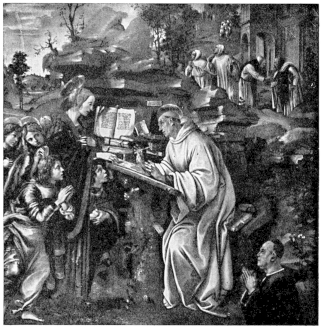We ask you, urgently: don't scroll past this
Dear readers, Catholic Online was de-platformed by Shopify for our pro-life beliefs. They shut down our Catholic Online, Catholic Online School, Prayer Candles, and Catholic Online Learning Resources essential faith tools serving over 1.4 million students and millions of families worldwide. Our founders, now in their 70's, just gave their entire life savings to protect this mission. But fewer than 2% of readers donate. If everyone gave just $5, the cost of a coffee, we could rebuild stronger and keep Catholic education free for all. Stand with us in faith. Thank you.Help Now >
Durham (Dunelmum)
FREE Catholic Classes
Ancient Catholic Diocese of Durham (Dunelmensis).
This diocese holds a unique position among English bishoprics. Owing to its geographical position on the Scottish border, the successive bishops were led to assume constitutional and political functions in addition to their spiritual office. Consequently their rights and privileges were peculiar and extensive; and even to this day the Anglican Bishop of Durham has precedence over all other English prelates except those of Canterbury, York, and London. The diocese is the lineal continuation of the Anglo-Saxon See of Lindisfarne, founded by St. Aidan in 635, when he came from the monastery of Iona at the request of St. Oswald, King of Northumbria, to evangelize that newly conquered heathen kingdom. He built his monastery on the Island of Lindisfarne, now Holy Island, off Northumbria. Thus Northumbrian Christianity was of Celtic origin and followed the Celtic use as to the observance of Easter and other matters. But in the south the Roman use prevailed and conflict became inevitable. The controversy arose in the time of St. Colman, the third bishop, and was settled in 664 at the Synod of Whitby when the Roman use was adopted. Shortly after, St. Colman resigned the episcopate and the see was transferred to York, with St. Wilfrid as bishop.
In 678, St. Theodore, Archbishop of Canterbury, cut off from it two new sees, one for the Lundiswaras of Lincolnshire and the other for Bernicia. In 680 the Bernician see was subdivided into the Dioceses of Lindisfarne and Hexham, while finally a separate bishopric was created for the Southern Pics. So that when St. Cuthbert became Bishop of Lindisfarne the diocese was only a fragment of what it had been under St. Aidan. In the ninth century when the Danes repeatedly harassed Northumbria, the Diocese of Hexham ceased to have a separate existance, and about 820 was merged in that of York. In 875, Eardulf, Bishop of Lindisfarne, was driven from his see, and taking the body of St. Cuthbert, he with his monks fled from the Danes. After wandering seven years they found a resting place at Chester-le-Street (882); and from here Eardulf and his eight immediate successors ruled the see. In 995 Bishop Aldhun again found himself defenseless before the Danes and fled with St. Cuthbert's body to Ripon. When peace was restored, he was returning to Chester-le-Street when miraculous signs were given that the body of the saint was to remain where the city of Durham now stands. A stone chapel was built to receive the remains of St. Cuthbert's body and Aldhun began a great church where the cathedral now is, which was finished and consecrated in 999. In this way Aldhun became the first Bishop of Durham.
The following is a list of the bishops with the dates of their accession.
Bishops of Lindisfarne
- St. Aidan, 635
- St. Finan, 652
- St. Colman, 661
- Tuda, 664
- St. Eata, 678
- St. Cuthbert, 685
- St. Eadbert, 688
- Eadfrid, 698
- St. Ethelwold, 724
- Cynewulf, 740
- Higbald, 780
- Egbert, 803
- Heathured (otherwise Egfrid), 821
- Ecgred, 830
- Eanbert, 845
- Eardulf, 854
Chester-le-Street
- Cutheard, 900
- Tilred, 915
- Wilgred, 928
- Uchtred, 944
- Sexhelm, 947
- Aldred, 947
- Elfdig, 968
- Aldhun or Aldwin, 990
- Aldhun came to Durham, 995
- Vacancy, 1018
- Eadmund, 1021
- Eadred, 1041
- Egelric, 1042
- Egelwin, 1056
- Walcher, 1071
- William de S. Carilef, 1080
- Vacancy, 1096
- Rannulf Flambard, 1099
- Vacancy, 1129
- Galfrid Rufus ( Lord Chancellor ), 1133
- Vacancy and usurpation
- of Cumin, 1140
- William de S. Barbara, 1143
- Hugh de Pudsey, 1153
- Vacancy, 1194
- Philip de Pictavia (el. 1195, cons. 1197)
- Vacancy, 1208
- Richard de Marisco ( Lord Chancellor ), 1217
- Vacancy, 1226
- Richard Poor, 1228
- Vacancy, 1237
- Nicholas de Farnham, 1241
- Walter de Kirkham, 1249
- Robert de Stitchill, 1260
- Robert de Insula, 1274
- Antony Beck, 1283
- Richard de Kellaw, 1311
- Lewis de Beaumont, 1318
- Richard de Bury ( Lord Chancellor ), 1333
- Thomas de Hatfield, 1345
- John Fordham, 1382
- Walter Skirlaw, 1388
- Thomas Langley ( Lord Chancellor ) (afterwards Cardinal ), 1406
- Robert Neville, 1438
- Laurence Booth ( Lord Chancellor ), 1457
- William Dudley, 1476
- Vacancy, 1483
- John Sherwood, 1485
- Richard Fox, 1494
- William Sever, 1502
- Vacancy, 1505
- Christopher Bainbridge (afterwards Cardinal ), 1507
- Vacancy, 1508
- Thomas Ruthall, 1509
- Thomas Wolsey (already Cardinal and Abp. Of York), 1523
- Cuthbert Tunstall, 1530
THE CATHEDRAL
The first Norman bishop, Walcher, was murdered by the people in 1080, and was succeeded by William de S. Carilef, who began the present cathedral, the foundation being laid 29 July, 1093. He also replaced the secular cathedral clergy by Benedictine monks from Jarrow and Wearmouth. The situation of the cathedral is very remarkable, as it stands high on the cliff overhanging the river, and the building itself is most imposing, with its noble proportions, and what Dr. Johnson called its appearance of "rocky solidity and of indeterminate duration". Bishop Carilef died shortly after beginning it; but the building was carried on with energy by the next bishop, the infamous Rannulf Flambard. He built the nave and aisles and the lower part of the west front, and in 1104 the shrine of St. Cuthbert was transferred to the new cathedral. In 1143 the see was usurped by William Cumin, chancellor of the King of Scotland, who for sixteen months violently kept the rightful bishop out of possession. This interfered with the building, but the next bishop, Hugh de Pudsy, was a great builder, and among his additions is the "Galilee Chapel ", a unique specimen of transitional work. Another special feature of Durham cathedral is the eastern transept, know as the "Chapel of Nine Altars", built by Bishop Poor about 1230. The central tower (214 feet) was rebuilt towards the end of the fifteenth century. The bishops also built their own half-regal residence, Durham Castle, and the extensive buildings of the monastery, portions of which still remain. The relations between the bishops and the monks were frequently very strained, especially in the time of the warrior-prelate, Antony Beck, though bishops like Richard Poor, Richard de Kellaw, or the scholar Richard de Bury , lived in harmony with them.
CIVIL JURISDICTION OF THE BISHOPRIC OF DURHAM
The twofold jurisdiction of the bishops of Durham was clearly recognized by the law from early times. In the reign of Edward I the Rolls of Parliament state: "Episcopus Dunelmensis duos habet status, videlicet, statem episcopi quoad spiritualia et statum comitis palacii quoad tenementa sua temporalia." But the original of this civil jurisdiction has never been ascertained. According to one theory it represents local survival of the old Northumbrian Kingdom. According to another view it was conferred by grant of some king, Alfred or, more plausibly, William the Conqueror. There is however, no historical trace of such grant, and recent research makes it more probable that it is a development of immunities granted to the Bishopric of Durham. Even before the Conquest the bishops held large endowments of land known as the patrimony of St. Cuthbert, Terra or Patrimonium Sancti Cuthbert . Therefore the diocese possessed large franchise or immunity both as against the sovereign power of the King of England and the local rights of the Earl of Northumberland. Thus the bishopric was not included in the Domesday Book, and even at the time of the Conquest the county of Durham was governed by the bishop with almost complete local independence. These extreme rights were strengthened by the fact that the bishops frequently had to repel Scottish invasions, by their own forces and at their own expense, which fostered both the military and financial independence of the palatinate. The strong feeling of Northumbrian independence also prevented the formation of any firm ties with the English sovereigns, until the masterful policy of Henry II brought Durham into subordination to the central government. But this subordination was exceedingly limited even then, and the bishopric escaped the deprivation of its privileges which befell many other franchises at that time. This was due to Bishop Hugh de Pudsey, who was the king's cousin and personal friend, and who took care as time went on to obtain the charters necessary to safeguard the liberties of his see.
These were most considerable. First, the bishop had within the bishopric every right that the king had in the country: Quicquid rex habet extra episcopus habet intra . He was therefore the head of the civil government, with appointment of all civil officers. The bishop's writ, not the king's, ran within the bishopric, and the "Bishop's peace" was regarded as different from the "King's peace" until the time of Henry VIII. Offenders and lawbreakers were tried in the bishop's court and if necessary punished by his officials. Forfeiture for treason and forfeitures of war were both his right, and he could create corporations, and erect fairs and markets. He did not, however, have the right of making treaties with foreign powers, though instances of attempted secret treaties with Scotland are not wanting. The bishops had their own mint, and their coinage bears their initials on the reverse of each coin. From the feudal point of view the bishops were very strong, as he was the universal landlord, and all land was held mediately or immediately of him and not of the king. From this follows his rights of wardship, rights to all mines and to treasure-trove, as well as his extensive forest rights. At law he could stay procedure against offenders, grant pardons, and even suspend the application of a statute. He had courts of common law, equity, and admiralty, besides his spiritual courts; and he regulated the relations between the latter and the temporal courts.
Thus, in theory, the bishop was as a king in his bishopric, but in practice his power was limited by the sovereign. In some instances the king actually infringed upon his rights, and in other cases there was conflict of jurisdiction. Up to the end of the thirteenth century the episcopal power developed in every way, then followed a period during which the kings somewhat unwillingly tolerated the position, for the sake of the convenience of having what amounted to a buffer state between England and Scotland, and also because it was difficult to solve a problem so beset with complications both ecclesiastical and feudal. Although it is sometimes stated that the bishops had a council in the nature of a parliament, it is becoming increasingly clear that we have here a confused tradition of two separate bodies -- the assembly and the council. The assembly (communitas) was practically the same gathering as the shiremoot in other counties. It raises money by taxation at both the request of the king and the bishop, and sometimes for its own purposes. But it was not a legislative assembly, since all general legislation applied to the palatinate, although Durham was not represented in Parliament till the time of the Stuarts. When Acts were not intended to apply to Durham express exemption was stated. The council was in origin a feudal body, chosen from the bishop's immediate followers and officials, the functions entrusted to it being the general administration of the palatinate, financial affairs, and the duty of advising the bishop. The judicial courts of the palatinate arose out of this body. Much of the civil and judicial independence of the palatinate was destroyed by the Act of Resumption passed in 1536, at the will of Henry VIII. By this act the bishop's semi-regal power was abolished. The see at this time was held by Cuthbert Tunstall, the venerable prelate who was the last Catholic bishop and who lived to witness the suppression of the monasteries, The Pilgrimage of Grace (1536), and finally the surrender of Durham Abbey (1540) which involved the spoliation of St. Cuthbert's shrine. During the reign of Edward VI he was imprisoned and an Act of Parliament was passed dissolving the bishopric and forming it into a county palatinate. After the brief respite of Mary's reign. Bishop Tunstall was deprived of his see by Elizabeth, July, 1559. With his death in confinement, on 18 Nov., the line of Catholic bishops ended. Ten years later during the "Rising of the North" the Catholics seized Durham cathedral, restored the altar, and publicly celebrate Mass, thus making it the last of the old English cathedrals in which Mass has been said.
In the bishopric there were six collegiate churches, Auckland, Darlington, Chester-le-Street, Lanchester, Norton, and Staindrop. The Benedictines held Durham Abbey, with the dependent houses of Jarrow, Wearmouth, and Finchale. There were Augustinians at Hexham and Brinkburn; Cistercians at Newminster; and Premonstratensians at Blanchland. Durham College (now Trinity), at Oxford, was greatly protected and helped by various bishops and priors of Durham, and possibly was originally a Durham foundation. The arms of the see are: azure, a cross between four lions rampant, or. The miter over the arms is encircled by a ducal coronet.
Join the Movement
When you sign up below, you don't just join an email list - you're joining an entire movement for Free world class Catholic education.
-

- Easter / Lent
- Ascension Day
- 7 Morning Prayers
- Mysteries of the Rosary
- Litany of the Bl. Virgin Mary
- Popular Saints
- Popular Prayers
- Female Saints
- Saint Feast Days by Month
- Stations of the Cross
- St. Francis of Assisi
- St. Michael the Archangel
- The Apostles' Creed
- Unfailing Prayer to St. Anthony
- Pray the Rosary
Pope Leo XIV Visits Historic Shrine of Our Lady of Grace
North Korea Pushes AI-Based Combat Systems
Adult Conversions to Catholicism Reach 20-Year High in the United States
Daily Catholic
 Daily Readings for Wednesday, August 20, 2025
Daily Readings for Wednesday, August 20, 2025 St. Bernard of Clairvaux: Saint of the Day for Wednesday, August 20, 2025
St. Bernard of Clairvaux: Saint of the Day for Wednesday, August 20, 2025 Soul of Christ: Prayer of the Day for Wednesday, August 20, 2025
Soul of Christ: Prayer of the Day for Wednesday, August 20, 2025 Daily Readings for Tuesday, August 19, 2025
Daily Readings for Tuesday, August 19, 2025 St. John Eudes: Saint of the Day for Tuesday, August 19, 2025
St. John Eudes: Saint of the Day for Tuesday, August 19, 2025- A Spirit to Know You: Prayer of the Day for Tuesday, August 19, 2025
![]()
Copyright 2025 Catholic Online. All materials contained on this site, whether written, audible or visual are the exclusive property of Catholic Online and are protected under U.S. and International copyright laws, © Copyright 2025 Catholic Online. Any unauthorized use, without prior written consent of Catholic Online is strictly forbidden and prohibited.
Catholic Online is a Project of Your Catholic Voice Foundation, a Not-for-Profit Corporation. Your Catholic Voice Foundation has been granted a recognition of tax exemption under Section 501(c)(3) of the Internal Revenue Code. Federal Tax Identification Number: 81-0596847. Your gift is tax-deductible as allowed by law.





 Daily Readings for Wednesday, August 20, 2025
Daily Readings for Wednesday, August 20, 2025 St. Bernard of Clairvaux: Saint of the Day for Wednesday, August 20, 2025
St. Bernard of Clairvaux: Saint of the Day for Wednesday, August 20, 2025 Soul of Christ: Prayer of the Day for Wednesday, August 20, 2025
Soul of Christ: Prayer of the Day for Wednesday, August 20, 2025 St. John Eudes: Saint of the Day for Tuesday, August 19, 2025
St. John Eudes: Saint of the Day for Tuesday, August 19, 2025

